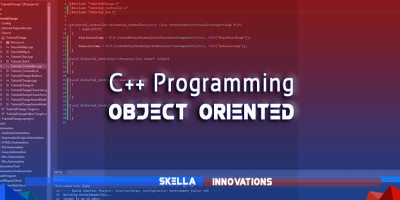

- PIC BASIC PROGRAMMING TUTORIAL INSTALL
- PIC BASIC PROGRAMMING TUTORIAL UPDATE
- PIC BASIC PROGRAMMING TUTORIAL FULL
- PIC BASIC PROGRAMMING TUTORIAL PRO
- PIC BASIC PROGRAMMING TUTORIAL SOFTWARE
Related services Outsource Software Development in C/C++ Choosing a language in which to develop the bootloader This is how components interact with each other when you boot the system: Next, we need to gain a general understanding of the system booting process. Secondly, all UEFI-compatible systems can behave like BIOS systems in legacy mode, so you’ll be able to run our bootloader on UEFI systems as well. Furthermore, almost all old devices support BIOS only. The first reason for this is because BIOS is supported by a wider range of hardware.

So for now, we’ll stick to the first sector as well. This isn’t obligatory for a modern boot system, but most developers place the bootloader in the first sector.

The boot sector is usually the first sector of the disk. When the firmware finds the bootloader, it loads it and the bootloader initiates the launch of the OS. Computer firmware reads the data contained in this first sector and processes it to the system memory when the machine is powered up. This sector is also known as the master boot record (MBR). Let’s start with a quick overview of bootloader development basics.Ī bootloader is a piece of software located in the first sector of a hard drive where system booting starts. Stage 4: Testing the bootloader on a VM and real hardwareĬonclusion Stage 1: Preparing for bootloader development Stage 1: Preparing for bootloader development
PIC BASIC PROGRAMMING TUTORIAL UPDATE
If you think you will want to use XC8 from the command line, make sure to check the option to update your system's PATH variable.
PIC BASIC PROGRAMMING TUTORIAL PRO
You can try the Pro version for a limited time, but I don't recommend it for one reason: When your trial expires, you may find you can no longer fit some of your projects within the memory of your device because your binaries are not being optimized anymore!
PIC BASIC PROGRAMMING TUTORIAL INSTALL
Once again, default options are OK.īe sure to install the Free version. Click "Downloads" in the left hand menu and select the version of XC8 for your computer. It is OK to use default installation options.

Navigate to the Downloads tab on that page and select the appropriate version for your computer. The newest version of MPLAB X can be found here. If you are using OSX or Linux there may be slight differences to the exact procedure. This guide will cover downloading, installing, and using MPLAB X and the XC8 Compiler for 8-bit PIC microcontrollers. These feature more optimizations to reduce code size and are not necessary for our purposes. We will be using the free Lite edition, which is a stripped down version of the Standard and Pro editions. XC8 is a C compiler for 8-bit PIC devices.
PIC BASIC PROGRAMMING TUTORIAL FULL
MPLAB X is built off the NetBeans project and is full featured. Now Windows, OSX, and Linux users can all program PICs with official software. It is the Successor to MPLAB v8 which was compatible with Windows only. MPLAB X is the IDE (Integrated Development Environment) for Microchip PIC microcontrollers.


 0 kommentar(er)
0 kommentar(er)
